Flying Tired: The crash of UPS Airlines flight 1354

On the 14th of August 2013, a UPS cargo plane on approach to Birmingham, Alabama struck trees and crashed on final approach, killing both pilots and leaving a half-mile trail of debris and packages strewn across a field short of the runway. As NTSB investigators descended upon the shattered remains of the wide body Airbus A300, the industry was forced to ask how, in 2013, a large plane flying for a well-regulated airline could simply fly into the ground with the runway in sight. The investigation would highlight the power of fatigue to strip away all the protections against this most basic of human errors — a problem which takes on special importance at cargo airlines, where pilots are expected to work more hours at odd times of day. As the importance of on-demand shipping continues to increase, the crash of UPS Airlines flight 1354 still illustrates the difficulties faced by cargo carriers and the pilots who work for them as they try to balance economic demands with the realities of human physiology.
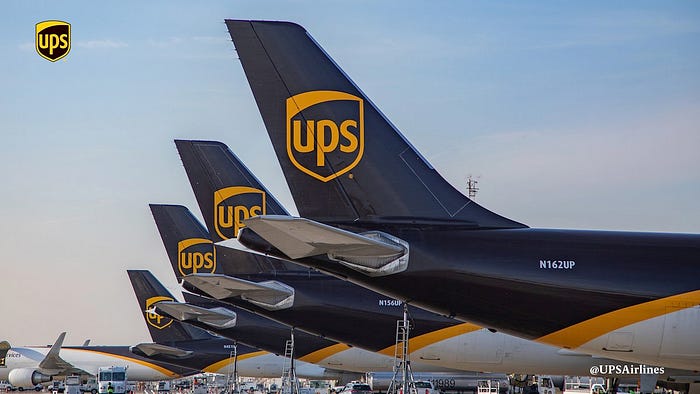
The United Parcel Service, or UPS, known to most Americans for its boxy brown delivery vans, is the world’s largest courier company, specializing in package delivery to more than 200 countries and territories worldwide. It is also a certified cargo airline, with a fleet of more than 500 airplanes flying to destinations around the world from its hub in Louisville, Kentucky. Unlike some cargo carriers, which handle bulk cargo, UPS primarily hauls small packages mailed by private individuals and businesses, often on behalf of the United States Postal Service (with which it is sometimes wrongly conflated). When you request expedited delivery of a mail parcel in the United States, there’s a solid chance your package will be loaded onto one of UPS Airlines’ brown and white jets within the next 24 hours.

Like most dedicated cargo carriers, UPS Airlines disproportionately operates at night. Unlike passengers, packages don’t care about the time of day, so cargo airlines can achieve faster turnaround times by flying at night when traffic is lighter. UPS flight 1354 was one such service, scheduled to depart Louisville at around 4:00 a.m. on August 14th, 2013, bound for Birmingham, Alabama. In command of the approximately 50-minute flight were 58-year-old Captain Cerea Beal, Jr.; and 37-year-old First Officer Shanda Fanning, both of whom had several thousand flight hours, including stints as flight engineers. Neither could have been called inexperienced, and by all accounts they were both average pilots, with nothing that would set them apart from the crowd — good or bad. In today’s world of highly regulated training regimes, it goes without saying that average should be good enough.
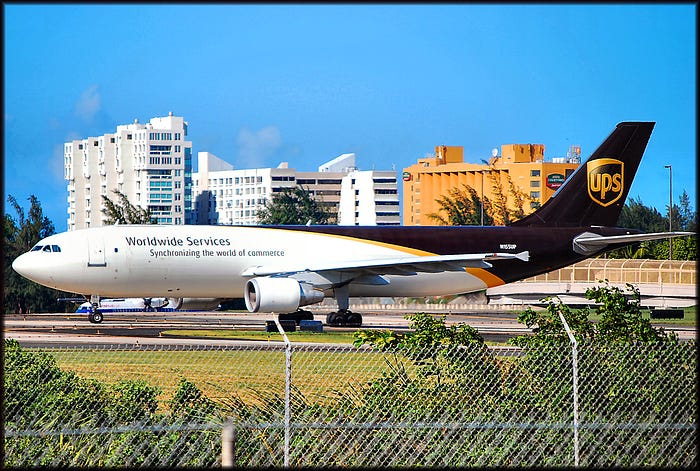
At about 3:36 a.m., the pilots, having arrived at their wide body Airbus A300 to prepare for the flight, switched on the power, engaging the cockpit voice recorder. From the very beginning, one topic dominated their conversation: fatigue.
“We have two extra hours today in Birmingham,” Captain Beal commented, observing their schedule. “Rockford is only 14 hours and […] minutes’ rest. So you figure a 30-minute ride to [the] hotel…”
“I know, by the time you — ” First Officer Fanning started to say.
“Fourteen hours!” said Captain Beal. “By the time you go to sleep you are down to about twelve. This is where the passenger side, you know, the new rules they’re gonna make out,” he said. In 2012, the FAA had proposed an update to flight duty time limits for pilots at passenger airlines, but airlines that only flew cargo would be exempt.
“They’re gonna make out — ” said Fanning.
“Yeah, we need that too,” Captain Beal said. “I mean, I-I-I — I don’t get that, you know, it should be one level of safety for everybody.”
“It makes no sense at all,” Fanning agreed. “And to be honest, it — it should be across the board. …In my opinion whether you are flying passengers or cargo or, you know, a box of chocolates, at night. If you’re flying this time of day…”
“Yup,” said Beal.
“The, you know, fatigue is definitely…” Fanning continued. “I was out and I slept today. I slept in Rockford. I slept good. And I was out in that sleep room and when my alarm went off, I mean I’m thinking ‘I’m so tired…’”
“I know.”
“And I slept today. I — you know, and we are just going to Birmingham. What if I was going to Burbank?”
“And these people — ” said Beal, “really, god, I know these people have no clue. I know. And they, you know, talk about cost. Well, on the passenger side it just costs just as much. The same thing. You know, I mean, give me a break. And these companies are the ones that are really making money. They got a lot of nerve.”
“Exactly, exactly, making the money. I know.”
“Yeah they do that — says, says a lot about what they — how they think about you,” Beal concluded. And then they were off.

UPS flight 1354 took off from Louisville at 4:03 a.m., headed south toward Alabama. The plane largely flew itself, as the crew had already engaged the autopilot to follow a pre-programmed track directly to the KBHM waypoint at Birmingham-Shuttlesworth International Airport.
Eighteen minutes after takeoff, the pilots tuned in to the Automatic Terminal Information Service broadcast for Birmingham, at which point they discovered that the airport’s main runway 6/24 was closed between 4:00 and 5:00 that morning for maintenance on the runway lights. With a projected arrival time of 4:51, they would be forced to land on the shorter and less fully equipped runway 18 instead.
Unlike Birmingham’s other runways, runway 18 did not have a full instrument landing system (ILS) that would provide precision guidance in both the lateral and vertical aspects. Instead, it had a localizer, which could help the plane align with the runway, but lacked any equipment that could broadcast a glide path, making it what is known as a non-precision approach. That meant that the pilots would be responsible for setting up their own virtual glide path using the A300’s on-board systems.

In the case of flight 1354, that was as easy as selecting the runway 18 localizer approach from a database and loading it into the Flight Management Computer (FMC). Shortly after learning that they would use runway 18, First Officer Fanning did just that without any trouble.
At 4:33, Memphis area control cleared flight 1354 to descend to 11,000 feet in preparation for its approach to Birmingham.
“They’re generous today,” Captain Beal commented. “Usually they kinda take you to 15 and hold you up high.”
“I know. Hold you up there,” said Fanning.
Nine minutes later, having descended to 11,000 feet and made contact with Birmingham, the flight crew received permission from the controller to make a slight right turn and descend to 3,000 feet to begin the approach. It was at this point that First Officer Fanning needed to “sequence” the approach in the FMC, ensuring that the waypoints are in the correct order.
The approach which she had earlier loaded into the FMC featured an approach centerline extending backward from the runway threshold to the initial approach fix at the COLIG waypoint on a 3.28-degree gradient. For the approach to be properly sequenced, that meant COLIG needed to be the next waypoint in the flight plan.
But on flight 1354, she forgot to sequence the flight plan at all. That meant that she never erased the KBHM waypoint that she had entered earlier in the flight to navigate to Birmingham. As a result, the flight path programmed into the computer had them flying direct to KBHM, then somehow teleporting to COLIG, creating a flight plan discontinuity error. Despite an extraneous white line to KBHM appearing on their navigational displays, and a “F PLN DISCONTINUITY” warning on the FMC screens, neither pilot noticed.

At 4:42, Captain Beal, having put the plane into a hurried descent toward 3,000 feet, said with a chuckle, “And they keep you high!”
“Yeah, they were doing good until then,” said First Officer Fanning.
“I know, it’s unbelievable,” Beal said.
“I kept seeing COLIG come closer and closer, and I’m like, ‘oh brother…’” said Fanning.
“I know it’s like… it’s like, coming, coming fast, ah yup,” Beal agreed. “Diving for the airport. Unbelievable.”
Moments later, the controller cleared flight 1354 to descend to 2,500 feet until established on the localizer. A couple minutes after that, flight 1354 reached 2,500 feet, leveled off, and intercepted the localizer centerline, aligning with the runway. Now that they were on the localizer, UPS procedures obligated them to descend to the minimum altitude for that stage of the approach, which was 2,300 feet, but they did not.
At 4:46, flight 1354 reached the BASKN waypoint, which served as the final approach fix — the point at which they would begin their final descent to the runway. Upon reaching it, Captain Beal attempted to switch the autopilot to “profile approach” mode, in which it would automatically follow the approach plan that First Officer Fanning had earlier loaded into the FMC. But because the plan contained a discontinuity error, the profile approach mode could not be engaged.
Recognizing the failure to engage profile approach mode, Captain Beal immediately moved to plan B, without telling First Officer Fanning. Abandoning the pre-programmed virtual glide path, he switched the autopilot to “vertical speed” mode instead, selecting a descent rate of -1,000 feet per minute. Seconds later he increased this to -1,500.
In the aviation industry, the technique he was now using is known as “dive and drive,” in which the pilots descend to the minimum altitude, level off, and then either continue down to the runway or go around upon reaching a designated missed approach point. Back in the 1970s, when non-precision approaches were the norm and cockpit technology was rudimentary, “dive and drive” was the most common approach technique. But by 2013 it had largely been superseded on non-precision approaches by the continuous descent technique, in which on-board computers create a virtual glide path that allows a smooth descent to the runway without having to repeatedly descend and level off. UPS advised its pilots to use this method, but did not require them to do so, even though it is safer. A dive and drive approach, by comparison, requires more careful monitoring of altitude and descent rate to ensure that the plane does not descend too far, but there was no sign that Beal had committed himself to a higher level of vigilance.
In particular, he missed one very weird indication. At that time, both pilots’ Vertical Deviation Indicators (VDIs), which display the location of the virtual glide path relative to the plane, were showing them as far below the glide path as was possible to indicate. This was because the computed distance remaining to the runway included the discontinuous leg to KBHM; therefore, believing that the pilots had much farther left to fly than they actually did, the FCM also believed that they should be much higher than they were. And so the VDIs showed them way below the glide path at a moment when they knew they were above it. Yet no one pointed out this obvious sign that something was wrong.
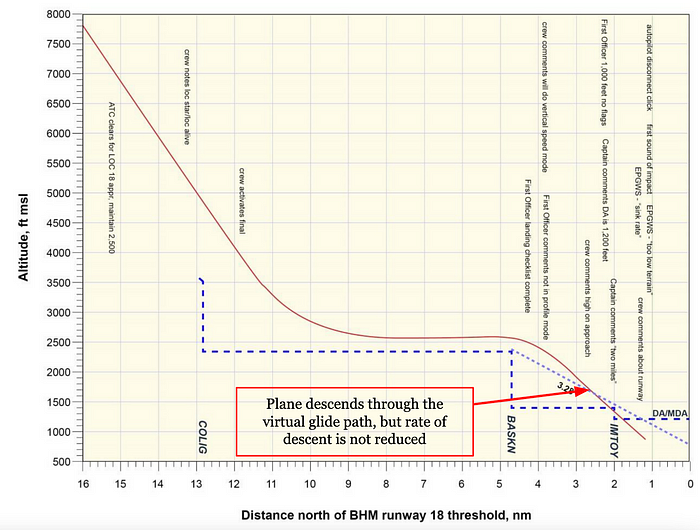
A short time later, First Officer Fanning glanced at the autopilot mode control panel and noticed that they were not in profile approach mode. “Let’s see, you’re in… vertical speed, okay.”
“Yeah, I’m gonna do vertical speed,” said Captain Beal. “Yeah, he kept us high.”
“Kept ya high,” First Officer Fanning agreed. “Could never get it over to profile.”
“Alright, so at three point three [nautical miles] we should be at 1380 [feet],” said Beal.
“Damn, I’m actually gonna have to…”
“And we’re like way high,” Beal continued. “Or higher.”
“About a couple hundred feet, yeah,” said Fanning, cross-checking her altimeter with where the approach chart said they should be.
Five seconds later, Fanning announced, “There’s a thousand feet, instruments cross-checked, no flags.” They were now 1,000 feet above the airport, or 1,750 feet above sea level, descending at -1,500 feet per minute toward their minimum descent altitude (MDA) of 1,200 feet. Eleven seconds after Fanning’s “one thousand feet” callout, flight 1354 descended through the virtual glide path and began to fall below it.
Captain Beal now acknowledged that their MDA was 1,200 feet.
“Twelve hundred, yeah,” First Officer Fanning repeated. Their altitude continued to tick down at a rapid clip.
By now they were well below 1,000 feet above the ground, the level at which they were supposed to break through the cloud ceiling, according their latest weather report. And yet here they were, still in clouds. “It wouldn’t happen to be actual,” Fanning said with a chuckle, implying that actual weather conditions didn’t seem to correspond to the report. In fact, a localized cloud layer at 350 feet above ground level was lingering specifically over the approach to runway 18.
At that moment flight 1354 descended below the MDA of 1,200 feet above sea level, or 450 feet above the ground. About five seconds later, sensing that they were too low to be descending at -1,500 feet per minute, the Enhanced Ground Proximity Warning System (EGPWS) announced, “SINK RATE! SINK RATE!”
Captain Beal reached over and reduced the commanded rate of descent to -600 feet per minute, then -400. A split second later, the plane dropped through the cloud base, and the runway suddenly appeared in front of them, shining through the darkness.
“There it is,” Fanning said.
“Oh, I got the runway out there, twelve o’clock,” said Beal.
“Got the runway in sight, eh,” Fanning repeated.
Their altitude kept decreasing. 200 feet. 150. 100. Beal disconnected the autopilot, preparing to manually land the airplane. Due to a lack of visual context, he couldn’t easily see that the plane was actually about to land itself more than a kilometer short of the runway.
Suddenly, the plane started to hit trees and power lines as it came in low over a residential neighborhood.
“Oh shit!” Beal exclaimed.
“TOO LOW, TERRAIN!” exclaimed the EGPWS.
“Oh did I hit something?” Beal said. “Oh, oh shit!” He tried at the last moment to pull up, but it was much too late.
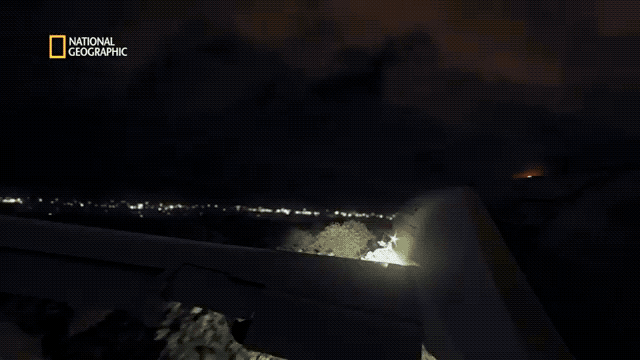
“Oh!” Fanning gasped.
“Oh, oh god!” Beal shouted. His were the last words on the cockpit voice recording. Three seconds later, UPS flight 1354 plowed into a gully in a field 1,480 meters before the runway threshold. The massive impact ripped the plane in half, throwing the cockpit up and over the top of the hill, while the center section with the fuel tanks tumbled along behind it, consumed in flames. After sliding for more than 400 meters, the battered wreckage of the A300 finally creaked to a halt within sight of the airport, surrounded by ripped up grass, burning jet fuel, and scattered packages. Although firefighters from all over Birmingham would soon be on the scene, they would find no one to save: both pilots were already dead, killed instantly by the force of the impact.
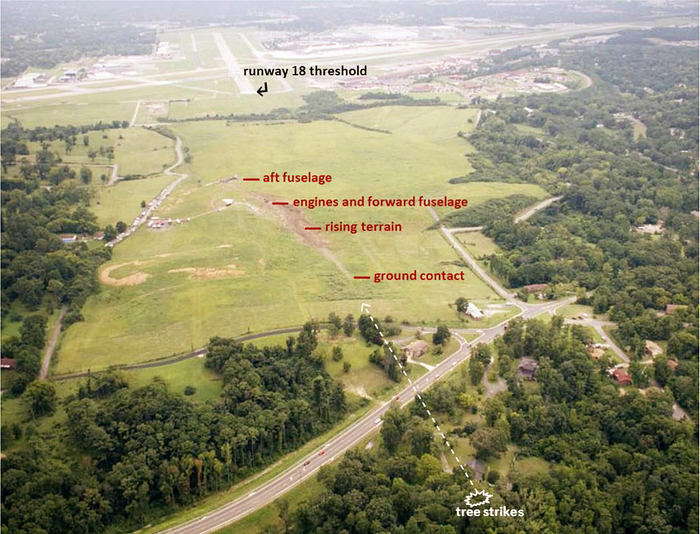
The question facing National Transportation Safety Board investigators as they arrived on the scene was not an unfamiliar one: why was the plane over here, and not over there? This question underpins every case of controlled flight into terrain, or CFIT, the most common type of fatal plane crash.
But every CFIT is different, even though they may share some key similarities. In this case, it all began when First Officer Fanning forgot to sequence the approach in the FMC, leaving in place a direct leg to KBHM which resulted in a flight plan discontinuity. This was a surprising mistake: sequencing the approach is something she would have done on every single flight, and there was no one obvious explanation as to why she suddenly forgot it. However, investigators did note that right at the moment she would normally have performed this task, she initiated a lighthearted conversation with Captain Beal:
“I don’t think we have many choices if runway six is…!”
“Ah hahaha, I know, what else can we do?”
“And when he said there for me I’m like, ‘ahh, well, what else, ahh, you gonna unroll another one out there for us real quick or whatever?’”
Although this couldn’t explain her omission all by itself, it was clear that her mind was elsewhere.

Subsequent to this, nobody noticed numerous cues that a flight plan discontinuity existed, including the extraneous line and an incorrect distance to the airport on their navigational displays, the strange indications on their VDIs, the “F PLN DISCONTINUITY” message on their FMC displays, and several more items. Fixing the problem would have been as simple as selecting the KBHM waypoint and deleting it from the flight plan, which could have been accomplished in seconds. Yet neither pilot ever seemed to realize that something was wrong. In fact, at the moment that these cues were most salient — around the time the plane aligned with the localizer — the pilots were talking about controllers at Birmingham often leaving them high on approach, an operational issue not directly relevant to the task at hand.
It was interesting to note that at no point did ATC leave them too high. The controller had actually cleared them to within 200 feet of the local minimum altitude well before reaching the final approach fix at BASKN. After aligning with the localizer, they had plenty of time to descend to this minimum altitude, but they never did so, even as Captain Beal continued to complain about being left high. This fixation on being too high would play a small but possibly critical role later in the sequence of events.

When Captain Beal tried to engage profile approach mode to begin their final descent at BASKN, the autopilot could not enter this mode due to the flight plan discontinuity. At this point he should have either abandoned the approach or requested a hold in order to find the cause of the problem. But instead, he switched to vertical speed mode and began a “dive and drive” approach without briefing the new plan or telling First Officer Fanning what he was doing. A pilot should never make such a major mode change, or any mode change for that matter, without verbalizing it. Failing to brief the new plan meant that First Officer Fanning was unprepared to provide the extra vigilance required in a “dive and drive” approach.
Furthermore, selecting an excessive descent rate of -1,500 feet per minute was not necessary in order to reach the glide path, which was only 200 feet below them. Beal’s apparent fixation on being too high might have led him to descend at twice the normal rate. But it also effectively compressed the descent timeline by around 50%, forcing First Officer Fanning to complete her monitoring tasks twice as quickly. The evidence indicates that she was not prepared to do this. In fact, after 1,000 feet, she made none of her required altitude callouts, including at the MDA, probably because she was not expecting to reach them so quickly. And without these callouts, Captain Beal’s awareness of his altitude was also compromised.
Another contributing factor was the pilots’ expectation that they would break out of the clouds at 1,000 feet above the ground. This misguided expectation was the result of a software program used by UPS dispatchers, which removed the “remarks” section at the bottom of each regular weather report before passing it on to the pilots. In this case, the meteorologist had added a remark about a variable cloud ceiling, but this was removed automatically by the dispatching system. Had they received this information, the pilots might have been prepared to encounter clouds at any level, and would not have focused so much attention outside the plane after passing 1,000 feet. Evidence indicates that both pilots were looking for the runway during this period, right at the moment when First Officer Fanning should have caught on to the fact that they were descending too quickly and were passing through the MDA.
Subsequent to this, events unfolded very rapidly, as the plane went from the MDA to impact in the space of about 20 seconds. Around eight seconds before the first impact with trees, a sink rate alert sounded, which could have informed the pilots that their trajectory was becoming dangerous. Calculations later showed that it would have been possible to prevent the crash at this point by executing a go-around, applying full power and climbing away from the terrain. But the UPS operations manual, in direct contradiction of the manufacturer’s guidance, stated that the only required response to a sink rate alert was to decrease the rate of descent until the warning stopped, which was what Captain Beal did. In this case that was insufficient to prevent the collision with the ground a few seconds later. And while the crew did spot the runway just before impact, within a split second of doing so the plane passed the point of no return and a crash became inevitable.

Investigators noted that besides the sink rate alerts, the plane provided no indication that they were about to crash. The problem lay with the “terrain clearance envelope” programmed into the Enhanced Ground Proximity Warning System. The EGPWS will provide terrain alerts below a certain terrain clearance floor, which decreases in height as the plane approaches a known airport in a landing configuration. Within a few hundred meters of the airport, this floor may be so low as to be useless, but it cannot be raised very much without causing nuisance warnings for planes that are on the normal glide path. In this case, due to the plane’s proximity to the runway and its high rate of descent, the EGPWS was only able to generate a terrain warning after the plane had already struck the first trees.
But it didn’t have to be that way. Capitalizing on recent technological advances, EGPWS manufacturer Honeywell had rolled out a new software package which raised the terrain clearance floor without causing additional nuisance warnings, and encouraged every operator to install it. Bizarrely, UPS had not done so, a decision which NTSB board member Robert Sumwalt called “incomprehensible.” Had the update been installed, a terrain alert would have been issued 6.5 seconds earlier than in the actual event. NTSB calculations showed that if Captain Beal had reacted immediately and forcefully to such a warning, it would have been possible to save the plane.
Furthermore, the EGPWS comes with a number of other optional callouts which can be, and usually are, activated by the operator. These include automatic callouts at 500 feet above the ground, “approaching minimums” when nearing the MDA, and “minimums” upon reaching it. UPS had not enabled any of these features on its A300 fleet. Nor had the company enabled the A300’s built-in automatic callout at 400 feet, which was an alternative to the 500-foot EGPWS callout. The NTSB was shocked that a major airline could have so many airplanes flying around without any of these callouts enabled. Investigators felt that the presence of these callouts would have significantly enhanced the crew’s situational awareness and could have prevented their inadvertent descent below the MDA.

But the most significant findings of the investigation did not have to do with the peculiarities of the flight’s final moments, but with the pilots’ fitness to fly. In fact, many of the errors committed by the flight crew, in particular the first officer, appeared to be symptomatic of fatigue.
Besides their conversation before the flight, there was plenty of evidence that repeated night shifts were taking their toll on both pilots. Captain Beal had recently told colleagues that UPS flight schedules were becoming more demanding, forcing him to fly more flights at night, and introducing more “flip-flopping” between night and day shifts. He also complained that the airline’s new one-week-on, one-week-off schedule was beginning to wear him down. One colleague told the NTSB that Beal had said, “I can’t do this until retirement because it’s killing me.”
A review of Beal’s activities in the days before the flight revealed that he was successfully employing a number of tactics to mitigate fatigue and get adequate rest. He appeared to have slept for over eight hours before the flight and should not have been fatigued, except for the inevitable degradation which comes with operating during the window of circadian low — the period between about 2:30 and 5:00 during which the human body expects to be asleep. Errors are always more frequent during this period, but there was nothing to suggest that Captain Beal was suffering from any extra fatigue on top of this.

First Officer Fanning was a completely different story. Although her schedule was not so rigorous as to preclude the possibility of getting eight hours of sleep a day, her ability to do so was severely compromised by what appears in hindsight to be a form of smartphone addiction. This is not to say that she was necessarily on her phone by choice; by definition, an addiction may be outside one’s control, and it has been estimated that as many as one in three people under 40 suffers from the same problem. It also cannot be known with certainty that there was not some other reason for her insomnia and excessive phone use, but the evidence has thus far not revealed one, and the connection between poor sleep and usage of electronic devices in bed is well-established. But regardless of the reason, telecom records showed that no matter whether she was on duty or off duty, she spent up to eight hours a day on her phone, including during periods when she should have been sleeping. This appeared to have been going on for some time: according to colleagues, she had admitted to having trouble staying awake in the cockpit. She had complained to her husband about feeling fatigued. And text messages sent in the days before the crash showed that feeling tired was practically her default state.
In the days before the accident flight, Fanning had a 62-hour layover in San Antonio, Texas during which she could have caught up on sleep. But instead she flew to Houston to visit a friend, then complained that she couldn’t spend time with her friend because she was sleeping constantly, even though telecom records showed she actually spent most of the time on her phone. This was the most significant evidence for a form of addiction rather than mere poor choices: despite wanting to get more sleep, she could not or did not do so.
After going back on duty on August 12th, she was awake for 13 hours, then got maybe two hours of sleep at the airport before reporting for another 9.5-hour shift. That same day, in a text message to a friend she said that she would “pay big money to sleep,” but she had already missed a wide open chance to do so by spending the day on her phone. “I’m getting sooo tired,” she wrote shortly before going on duty, and later, in another text, she again reported that she was sleepy.
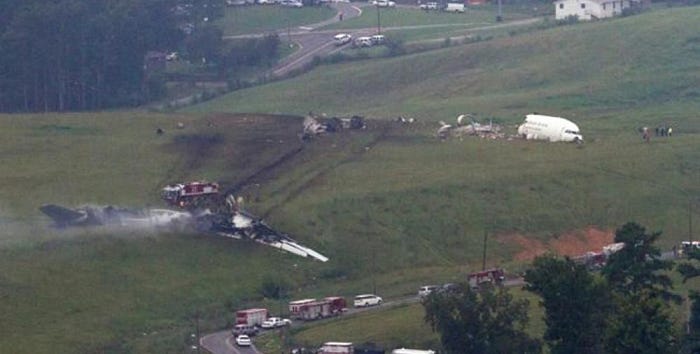
The next day, August 13th, she again had a 14.5-hour period in which to rest. But she ended up sleeping for at most four or five out of those hours, spending the remainder on her phone. This was on top of a nine hour sleep debt accumulated the previous day. At 11:18 that morning she texted a friend, “u got that rite, i fell asleep on every leg last nite- n rfd now, got here at 6 am n bed by 645 ish, now up, slept like 4 hrs, hoping I will nap again this afternoon.” But that afternoon, she was outside of her hotel room, clearly not sleeping. She went on duty again at 20:36 that night, flew to Louisville, checked into a sleep room, and slept for less than two hours before she had to wake up again to fly the accident flight to Birmingham. Indeed, by the time she stepped aboard flight 1354, she must have been an absolute wreck.
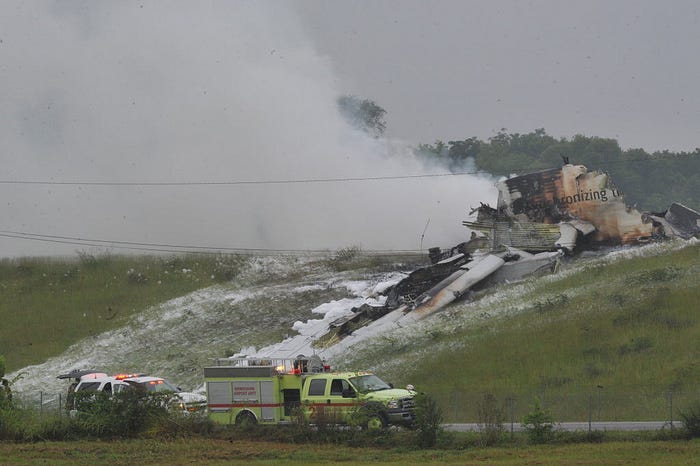
The NTSB determined that First Officer Fanning’s improper use of her rest periods led to severe fatigue that compromised her ability to fulfill her role as monitoring pilot on flight 1354, although it must be emphasized that the problem could have been pathological as much as personal. And Captain Beal, although not especially fatigued, had specific vulnerabilities which required an attentive first officer. In fact, Beal’s training records revealed that while he never failed any major examinations, he did experience difficulties with non-precision approaches due to incorrect use of the altimeter, falling behind the plane while in vertical speed mode, using vertical speed mode when another mode was more appropriate, flying below minimums, and failing to communicate about his descent rate — all the exact errors which he committed on flight 1354. It was therefore apparent that the combination of this captain with a severely fatigued first officer on a flight which demanded the use of a relatively rare non-precision approach created the circumstances for the accident to occur.

The NTSB also decided to look into whether there were systemic issues at UPS which could have led to chronic fatigue among its pilots. Investigators found that the airline was not violating duty time limits, nor was it even pushing pilots particularly close to them. But its system for allowing pilots to call in sick when fatigued left something to be desired. Colleagues of First Officer Fanning reported that fatigue like hers was an “epidemic” among UPS pilots, and many of them, including Fanning, never called it in. In fact, while UPS pilots were told to call in sick if they were too fatigued to fly, they were required to file a fatigue event report which would then be reviewed to determine whether the pilot was responsible for their own situation. If they were found responsible — for example, if they were on their phone instead of sleeping — the missed shift would be debited from their available sick leave. Furthermore, UPS would pay pilots a bonus based on how much unused sick leave they had left at the end of the year. Although it was possible to regain sick time by taking on extra shifts, this could have created an incentive not to call in.
When the airline pilots’ union gave UPS pilots a questionnaire about this issue, 92% of the workforce participated, and an overwhelming 91% of respondents felt that the company culture did not encourage calling in sick when fatigued. Additionally, the NTSB spoke to six pilots who had previously called in sick due to fatigue, and two of them said the experience had left them hesitant to do so again. Clearly, the system needed reform.

As a result of the accident, UPS did finally update the EGPWS on its A300 fleet, which it should have done the moment the update became available. The NTSB later made an additional 20 recommendations, including that pilots engaged in overnight operations brief the threat of fatigue prior to every departure; that all operators be required to activate the “minimums” alert on planes equipped with EGPWS; that Airbus provide pilots with more explicit warnings if the FMC is programmed incorrectly; and that UPS work with the Independent Pilots’ Association to reform its fatigue reporting system. But this last point would prove easier said than done.
When it comes to designing rules for calling in fatigue, airlines say they face a basic paradox: how can pilots be made to feel completely comfortable with calling in, while also preventing abuse of the system? There may not be an easy answer to that question, but the NTSB felt that the system UPS had devised was clearly defective. And yet when the pilots’ union laid out this evidence and demanded that UPS undertake reforms, UPS accused the union of trying to “politicize” the tragedy and denied that there was anything wrong, citing the fact that UPS pilots fly fewer hours than the industry average. The highly public dispute eventually escalated to the point that the both the union and UPS were kicked out of the investigation by the NTSB for violating the terms of their participation agreements.
It was true, of course, that UPS’s flight schedules left far more rest time than was legally required. In fact, the updated duty time limits mentioned by the pilots of flight 1354, which came into effect in 2014, would not have forced their schedules to be altered in any way. NTSB board members were careful to note that while they were very concerned about the law’s exclusion of cargo pilots, it would be disingenuous to use this accident to support that argument. But what the board did want to make clear was that when over 80% of pilots say there is a problem, there is almost certainly a problem. In a statement, member Sumwalt wrote, “At the conclusion of the board meeting where I expressed concern over the results of this survey, UPS representatives were quick to approach me and deny these problems exist. Denial is the enemy of change. Rather than trying to convince others that an estranged culture does not exist, UPS and its pilots would be better served by working to improve the working conditions.”
UPS hasn’t had another accident since the crash of flight 1354, and if anything the tragedy itself — sometimes referred to casually in the industry as “the fatigue accident” — has, on a completely informal level, done more to encourage pilots to call in sick when fatigued than has any specific policy change. But no one who flies cargo will tell you that the problem of fatigue has been resolved. Nor can it be, as long as pilots continue to fly night shifts during their circadian lows. However, both pilots and airlines can take a proactive approach to mitigating fatigue, whether that’s by creating a non-punitive system for calling it in or by avoiding smartphone use when the time would be better spent sleeping. It can be difficult for an individual to correctly evaluate the risk involved in getting insufficient sleep before a flight; after all, no one thinks that the worst case scenario will happen to them. But it did happen to the pilots of flight 1354, and the rest of us would do well not to forget it.
______________________________________________________________
Join the discussion of this article on Reddit!
Visit r/admiralcloudberg to read and discuss over 200 similar articles.
You can also support me on Patreon.
